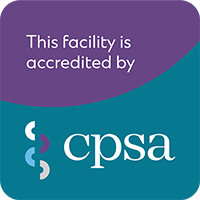Flabbergasted, simply flabbergasted (as they sing in Sesame Street – yep, I’m old, but I do so appreciate some nostalgia). Not for a decade had I come across this faulty assumption. And there it was – the 3rd party’s first request in line with their request to provide an independent evaluation of an injured person was:
Please address the following:
- There was only $3627.84 worth of damage to the vehicle, indicating the severity of the impact.
- Patient has done well over 100PT sessions with continued and ongoing treatment. Why has there been minimal improvement?
Now, there were some other requests also – was the injured person admitted to hospital after the collision; were they paralyzed – you can see where this was coming from? Now they obviously hadn’t read these award winning (!!!???) blogs, whereby evidence suggests that not all people fully recover and secondly that physiotherapy is not successful for many people with chronic WAD. But, rather than get exasperated for longer than a day (!!!), I thought that this might be an opportunity for education. So, me being me (i.e. nerdy), off to the literature I headed, and what did I find.
What Factors Predict Poor Prognosis?
Well, collision factors are purely and simply not associated with poor recovery trajectories. Professor Walton from Western University has updated prognostic factors for those involved in a motor vehicle collision. Actually, participant factors are the biggest predictor of poor prognosis – that is, high initial pain levels (> 5.5/10), high levels of disability, higher levels of WAD grade (i.e. nerve involvements vs no nerve involvement), previously injured neck, or presence of other musculoskeletal symptoms at baseline such as headache or low back pain predict a lengthy or not full recovery.
And if we attempt to predict who might have moderate to severe symptoms 3-months post-injury, then the combination of age > 35, higher levels of disability (> 39%) and higher levels of hyperarousal (stress > 5) is very accurate (over 90%) to assist with this determination.
What About Data on Crash Severity?
Well, there is one seminal paper, authored by Drs Croft and Freeman who searched databases to determine the association between crash severity and injury risk or injury severity or duration of symptoms in motor vehicle crashes of under 40km/h. They found that there were a substantial number of injuries reported in crashes of little or no vehicle damage. Thus, damage of a vehicle is an unreliable predictor of injury risk or outcome in low velocity crashes. The most obvious example of this correlation is contrary to this hypothesis – scratched paint or a light bulb housing replacement will cost significantly more to repair on an expensive car than what it will be to write my old car off – and no injuries resulted from the scratched paint, yet my old vehicle could be totalled and have less cost associated with writing it off.
What About the Patient?
Yeah (as they say in Oz), it should always be about the patient. Here are the pertinent outcomes ‘now’. I wasn’t privy to his baseline measures (as the insurer would be) and they are not relevant to ‘future or poor prognosis’, as the prognosis is already poor given his 2-year chronicity.
Self efficacy: A little confident in performing daily activities when in pain.
PEG Score: 9: average Pain: 8/10 interference with Enjoyment of life: 9/10 interference with General activity: 9/10
Neck Disability Index: 54% = perception of severe neck pain-related disability
Oswestry Disability Index: 58% = perception of severe back pain-related disability
Pittsburgh Sleep Quality Index: 14 / 21; evidence of pain-associated sleep disturbance.
DASS-21: Extremely Severe’ levels of anxiety (22) and depressive (30) and ‘Severe’ levels of stress (30) related symptoms
Pain Catastrophizing Scale: 43 (>24) = evidence of impaired pain cognitions
PTSD Checklist for MSM-5 (PCL-5): 51/80. Severe post traumatic stress symptoms. FULFILLS requirements for possible diagnosis of PTSD. Interview by mental health professional warranted
Physical Activity: Moderate level of activity (MET-mins/week = 693); Vigorous = 0, Moderate = 0, Walking = 693. Sitting = 90 minutes/day
Health-Related Quality of Life: reduced physical 25 (>2SD) and mental 34 (>1SD) health quality of life.
Physical examination findings fulfilled Laslett’s and Schneider’s derived clinical prediction rules for possible facet joint involvement in the neck and low back. Referral for diagnostic procedures was made to determine suitability for longer term interventional solutions. As we mentioned earlier, not all people respond to physiotherapy, irrespective of the volume or type provided and require validated medical treatment. Referral for psychological evaluation and CBT for sleep insomnia was also made.
Off to the phone I went…





